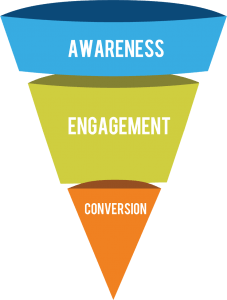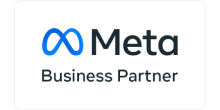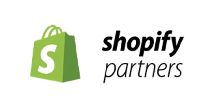Does your business provide products and services to people in your local community? Looking to generate more leads?
Well, look no further. Over the years, I’ve worked with thousands of local businesses helping them to scale by fixing one simple problem: lead generation.
In this local lead generation guide, I’m going to share six essential tips that will help you reach your local community using online marketing. Forget dropping flyers through letterboxes.
I’ll be sharing some lead generation basics, along with inside information regarding the use of landing pages, Facebook ads, and marketing funnels.
Stick with me. I’ll help you find new clients by generating more sales leads, and – most importantly – I’ll show you how to turn those leads into customers.
What is local lead generation?
First, we need to determine what a ‘lead is’.
A lead is simply someone who has shown interest in your product/service.
They might have come to you, or you might have consciously reached out to them. It’s someone who has shown an interest in your products or services.
Perhaps they’ve found your website and completed a form, or they might have emailed you. They may have called your office or sent a message to your Facebook Page.
Your job as a business is to turn that lead into a revenue-generating transaction.
Consider a basic sales funnel.

It might look like this:
- Brand Awareness – your content; your marketing activity
- Lead Generation – the customer following a specific behaviour; making contact
- Sale – the customer pays for your service/product
Lead generation is the process of encouraging more interaction with your funnel; getting people to take the first step.
Without leads, we have no sales.
But we don’t want to do outbound lead generation. We want leads to come to us. Commonly referred to as inbound marketing.
Create a Lead Generation System
Sure; word-of-mouth gets you leads (if you’re lucky).
Networking events help you to make connections with potentially useful people.
Handing out leaflets might generate some interest.
But:
Those approaches rely on the intangible: LUCK.
Luck can make us rich. But it wears thin, and it’s a stab in the dark. It might work. But then again, it might not.
Best Lead Generation Software
We want to create a system where we can generate leads predictably and consistently and in a way that’s trackable. That way, we can understand more about our own marketing processes – recognising what works and what doesn’t.
And – more importantly – we want to be able to analyse how the money we’re spending on our marketing activities is paying off.
Online is a much more tangible environment for your marketing activities. Your customers are online, after all.
That’s where you should reach them.
Lead Generation Tools
If we’re getting leads and failing to act upon them, we’re wasting our time (and our money).
But, in order to capture those leads in the first place, we need a system to set up our lead-generating activity.
We need two things:
1. A place to store our leads and track their progress so that we don’t lose track of them
2. A system that allows us to market to those leads.
I’m going to recommend two types of tools.
Get Yourself an Email Marketing Tool
Some people say that email marketing is dead.
Those people are wrong.
Statistically, email marketing represents the best ROI on any other marketing activity…
Email marketing provides up to 3,800% ROI according to this study by Hubspot.
When people start finding you online, you’ll need a way to start connecting with them and to securely store their details (with all the GDPR stuff controlled by safe hands).
My favourite tool for email marketing is ActiveCampaign. I’ve used many others: Mailchimp, ConvertKit and a list of others – but ActiveCampaign remains my go-to; providing an array of advanced automations that suit my marketing strategy.
However:
If you’re just starting out, I’d suggest going with something like Mailchimp – it’s much easier to navigate and use, and probably the cheapest email marketing tool on the mass market. And it will provide you with great tools to get you started (and they have the all-important GDPR toolset built-in).
Once you have your way of gathering a mailing list and a means to regularly connect, you should look at a landing page/funnel building tool.
Landing Page Software/Funnel Builder
These tools allow you to build super-quick and technically sophisticated landing pages and marketing funnels WITHOUT requiring ANY coding, design or programming knowledge.
When we’re creating offers or new pages on our website, these tools make everything just that little bit easier.
They allow you to:
- Create workable sales funnels, bespoke to your exact campaign requirements
- Test them
- Get them out there very quickly
My favourite tool is ClickFunnels. This platform allows you to build sales funnels, make landing pages, and start generating leads and making money super-quick – all within around 30 minutes of signing up.
Other funnel building tools are LeadPages, Instapage, Unbounce – they all give you a pretty similar result. So find the one that works for you.
Once you have these two tools in play, we can start generating leads that are more likely to result in increased revenue, higher engagement, and – most importantly – new customers.
I’m going to share a 6-step process with you to maximise your local lead-generating potential.
Step One – Set Up “Google My Business”
Setting up “Google My Business” is a straightforward process. But without it, you’re going to struggle to get found in organic search.
Think about the ways someone might search for your business online.
Say, for example, you run a coffee shop.
If someone wants a coffee and they’re in your local area, what do you think they’re going to do?
Google something like… “Best coffee shops near me”. What appears first? A map like this…

You need to be on that map.
That map could contain your opening hours, images of the outside of your building (if you have business premises), phone numbers, reviews, etc. It’s the perfect business card.
If your info isn’t there, potential customers are going to go to the businesses that appear in your place.
It takes ten minutes to register.
Can you afford NOT to spend ten minutes setting it up?
Step Two – Content Marketing for your local business
If you’re not producing content online, then – effectively – your business doesn’t exist.
Think about your own consumer behaviour:
Say, you have back pain.
One of the first things you’re likely to Google is:
“Why do I have back pain?”, or
“Best Chiropractor in Edinburgh”, or
“Massage Edinburgh” (be careful with that one! ?)
This is why we set up Google My Business: so we appear on the list.
But you also want to use those very search terms to build your content. Create articles, videos or blog posts that address those questions.
A user is likely to look at the business that’s at the top of Google first, of course. And – if you’re going down the organic route – you can work your way up the Google rankings by producing content that addresses those search terms related to your business.
Be THE source of education and information for your niche.
Do it in video format as well as in text. That way, you get the SEO rankings on both Google AND YouTube.
What’s most important is that most businesses aren’t doing this. Most companies are relying on clunky keyword stuffing and not addressing problems that their customers are likely to have through their content.
Google wants your site to be valuable and useful, and they’ll direct traffic your way if they observe that visitors are exploring your site beyond that landing page.
Think about the questions your customers might have, and address them through blogs and videos on your website and/or YouTube channel.
Step Three – Use Facebook ads
Once you’re starting to create content, use Facebook Ads to promote it to reach new audiences, defined by their interests, location, and behaviours.
Facebooks Ads are amazingly powerful because the platform has SO much information about its users. And you can use that information to reach people in your local area.
This way, they find out about your business – through the content that you create and share.
Quick Local Business Example
Say, you’re a chiropractor, and your typical customer is male and aged 45-65.
Create a post with your content marketing copy, and promote it; telling Facebook that you want to target men aged 45-65 in your local area.
And – just like that – your marketing content will appear in people’s timelines who are likely to be your future customers.
Facebook has this unique ability to target people based on their locality and on a wide range of very subtle and specific niches and demography categories.
And you’re totally missing out if you’re not using it.
And because your content is valuable, useful, and not directly selling anything, you’re going to get tons of traffic to your website through your promoted content for very little financial investment.
If Facebook recognises that you’re providing useful and valuable content, then they won’t charge the earth – and it will be cheaper still if you produce video content.
Facebook Ads are an incredible way of driving customers to your website and gathering a following on your Page. And once we start creating offers, we can use Facebook Ads to inspire people to sign up.
Click here for my beginners guide to setting up your first Facebook campaign if you’re new to Facebook advertising. Here’s a specific guide on how Chiropractors can use Facebook ads.
Step Four – Create a Free Offer
Creating a reason for people to visit your site (or visit your physical premises) is imperative in local lead generation.
Free offers help you to get people through the door. I don’t mean that literally (although, sometimes, people do step foot through your door).
“Stepping through the door” can mean:
- Someone calling you
- Sending you an email
- Filling in a contact form
- Signing up to a workshop/seminar/webinar
Stepping through the door is an indication that your potential customer has a problem that you can solve. It’s the all-important lead that we’re looking for.
So:
To get more leads online, create more free offers.
- If you’re a dentist, you could offer free whitening
- Chiropractors could offer a free 10-minute back massage
- Personal trainers might offer a free session
Whatever your business, consider what you might be able to give away to get your potential customers to step through the door. Offer them something that they’re going to value, and they’re very likely to come back and pay for it the second time around.
You’re introducing strangers into your funnel, and converting them into potential revenue-generating customers.
Consider how competitive advertising is: it’s not enough to just offer 10% off, because that might still represent a considerable investment for a product or service they’re not sure about.
Give them something for free to show them what they’re missing – then you’re likely to see them stepping through the door on their own accord, armed with cash or a credit card.
Step Five – Start Building Your List
Once you start gathering customer details from local leads, you need somewhere to store them so that you can continue to communicate with those people.
When somebody signs up for the free offer, it’s only the start of the journey; it’s absolutely not the end.
As a business, we need to keep communicating.
If you don’t continue that line of communication, you’re wasting the opportunity that’s been given to you. You don’t want them to forget who you are because they might go to your competitor.
Keep communicating and – most importantly – keep your content interesting and useful.
You’ve probably heard that it takes seven touchpoints before someone is prepared to buy from you. Email marketing allows us to continue and develop through those touchpoints until they’re finally ready to buy,
Step Six – Have A Process to Turn Leads Into Sales
One of the problems I see frequently is that people get leads through free offers and content marketing, but they fail to turn those leads into customers – basically, because they don’t have a process in place.
Consider:
How do you turn a lead into a customer?
If someone gives you their email address, how do you get their phone number so that you can speak to them? If you get them on the phone, how do you structure the conversation to get them to come into the office and buy?
Different businesses need different things. Dig into people’s pain points and try and nurture them towards the end at which they might buy.
Perfect your sales funnel over time and you’ll get more takers.
It’s time to move away from “luck marketing” and develop processes that work, producing positive outcomes for the growth of our businesses.
Get your communications online, get well-known in our area, and have an effective sales funnel that helps you guide leads into customers.
Predictable and consistent.
That’s the way to really move forward – keeping control of your business growth.
Generate more leads with Yatter
If you’re looking for an agency to help generate more leads for your local business, get in touch today.






